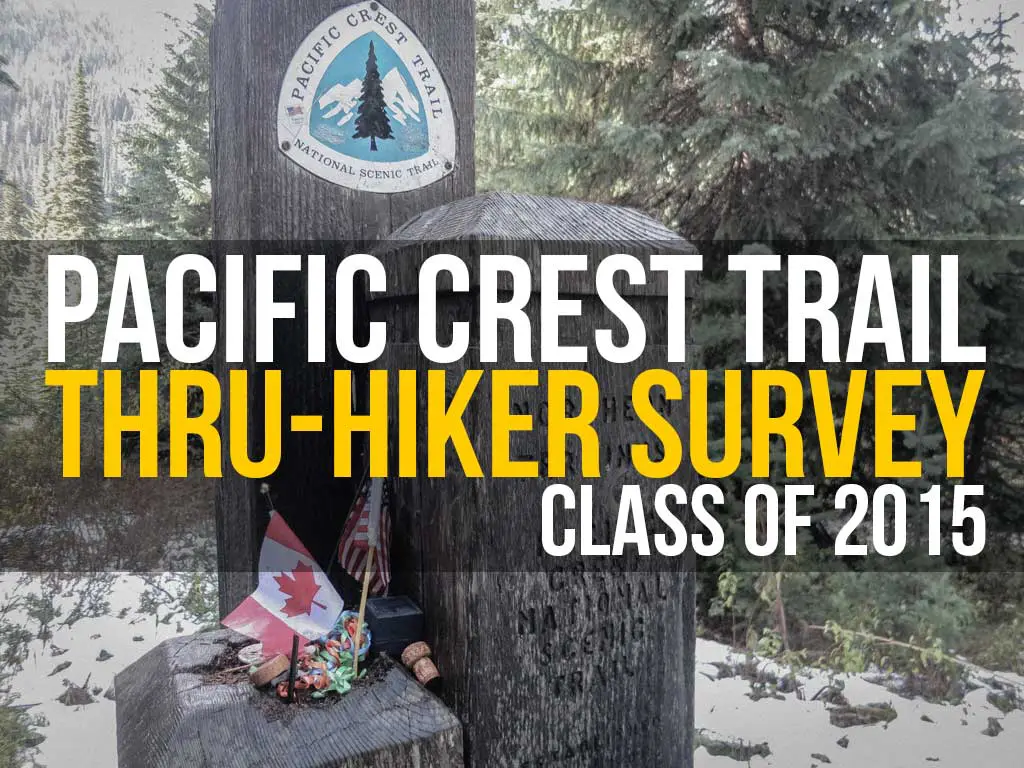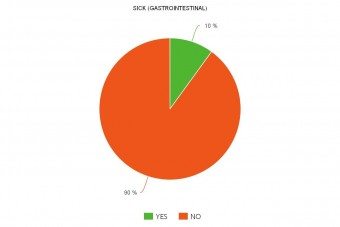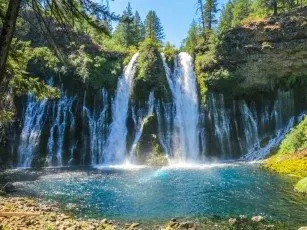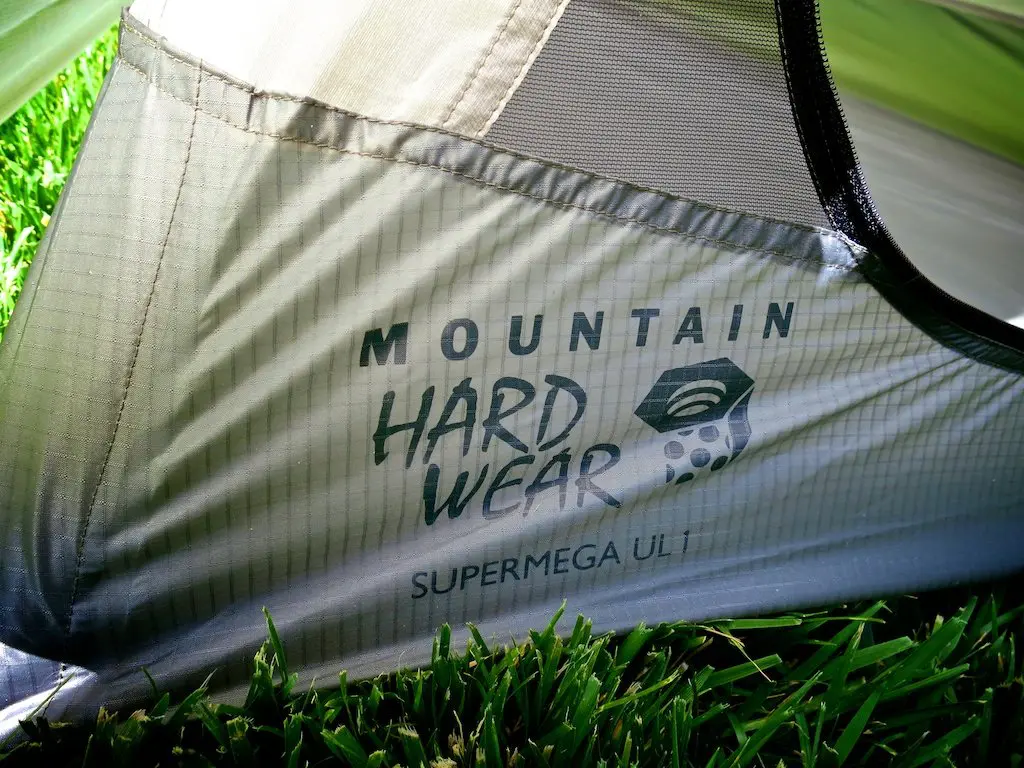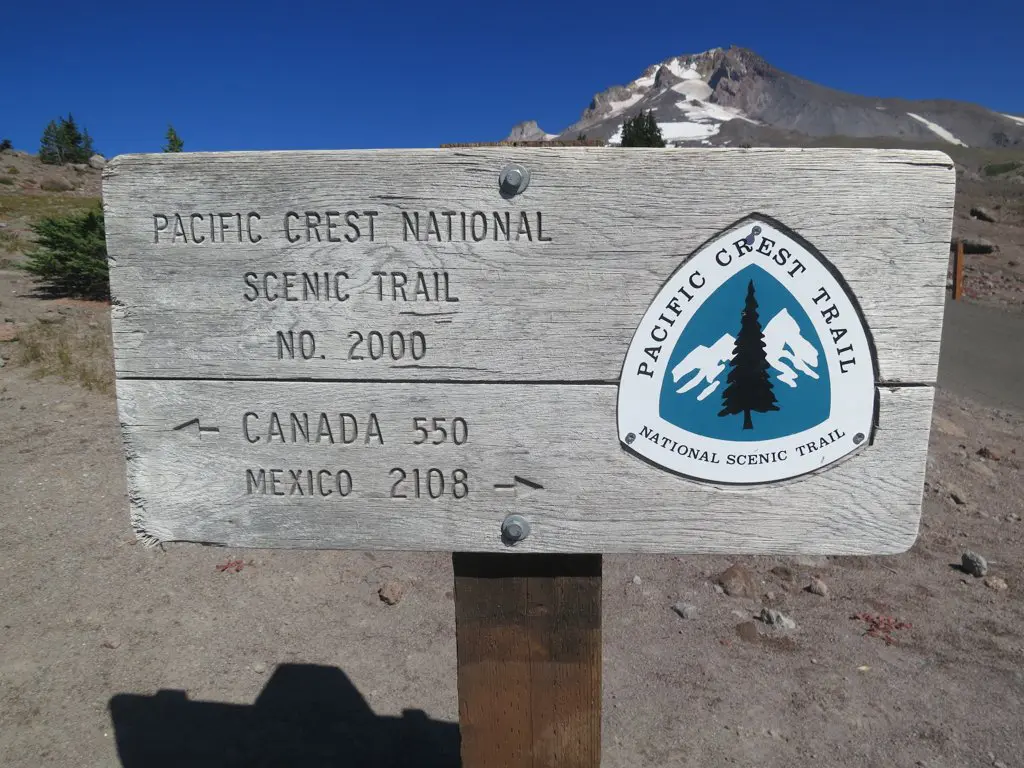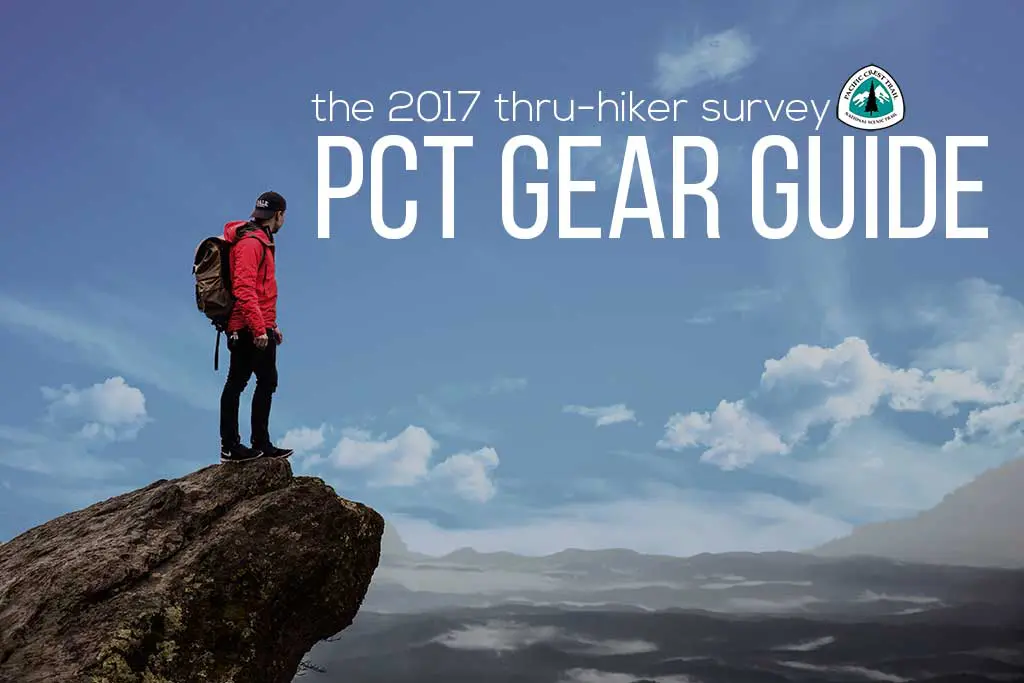The Annual Pacific Crest Trail Thru-Hiker Survey (2015)
Check out the most recent PCT Survey results here.
Given the popularity and supposed usefulness of my previous two surveys of the Pacific Crest Trail classes of 2013 and 2014, I have conducted my survey for the third year in a row (I guess this is actually an annual thing now).
As many of you know, all the information here should be taken with a grain (or a heaping spoonful) of salt. Nothing about this data is at all scientific or statistically significant (or even an accurate representation of this year’s PCT class).
That being said, I hope that you find this information entertaining, educational, and/or interesting.
I had 193 completed surveys (90 more than last year), and most hikers provided usable data on their hikes (to those of you who took the time to fill out the survey accurately, I offer my sincerest thanks).
So here you are, the results of Halfway Anywhere’s 2015 Pacific Crest Trail Thru-hiker Survey:
Changes from Last Year
- Last year, I only surveyed northbound thru-hikers who completed the trail. This year, I opened the survey to everyone (NOBO and SOBO), whether or not they completed the trail (the data has been appropriately sorted/annotated).
- I added questions about the total pairs of shoes used, why people did not finish, non-finishers’ miles completed, completion dates (from which the total length can be figured), whether hikers attended Trail Days, average daily mileage, and total amount spent on the hike.
- This year, I have included all the resupply stops and the percentage of hikers who stopped at each one instead of simply listing the most frequent stops.
Notes on the Data
- Not everyone meticulously documents the stats of their thru-hike (I guess I’m weird), so the data is 100% accurate. However, I hope people gave their best guesstimates when answering questions like “How many zero days did you take?”
- For simplicity’s sake, I refer to the survey respondents collectively as this year’s “class“. Remember that this is but a percentage of the overall number of this year’s thru-hikers and is not necessarily representative of the entire PCT Class of 2015.
- Because whole numbers are nicer to look at, and of course, because of rounding, etc., anyone bored enough to add all the percentages for a given question may arrive at 99 or 101 instead of 100. Get over it—we aren’t dealing in exactness here.
Also, since I collected data from as many hikers as I could this year (I even got a few enthusiastic section hiker responses), I have divided the responses to some questions to normalize the results and (hopefully) make them more useful (such as splitting northbound and southbound hikers when looking at “start date”).
Here is a quick description of the labels used to differentiate different hiker segments:
- FINISH: Everyone who completed the entire PCT (regardless of direction hiked)
- NOBO: Northbound thru-hikers (all)
- NOBO-0: Northbound thru-hikers who did not complete the PCT
- NOBO-1: Northbound thru-hikers who completed the PCT
- SOBO: Southbound thru-hikers (all)
- SOBO-0: Southbound thru-hikers who did not complete the PCT
- SOBO-1: Southbound thru-hikers who completed the PCT
If no label has been appended to a data point, then I used all the data collected.
SOUTHBOUND DATA: I only received responses from nine southbound thru-hikers. Four additional section hiking southbounders also responded, but their responses are not included in the SOBO-0 and SOBO-1 groups.
Demographics
To start, let’s examine some information that won’t help anyone prepare for their PCT thru-hike but that is nonetheless interesting: HIKER DEMOGRAPHICS.
- SEX | 63% Male, 37% Female
- AGE | <1% under 20, 21% 20-24, 37% 25-30, 23% 31-40, 6% 41-50, 7% 51-60, 6% 61+
- AGE (AVERAGE) | 33 (σ = 12)
- RACE | 1% Asian, 85% Caucasian, 1% European, 2% Hispanic, 2% Native American/Alaska Native, <1% Ginger, 4% Multi-Racial, 5% Decline to answer
- EDUCATION | 5% High School Diploma, 18% Some College, 7% Associate Degree, 52% Bachelor’s Degree, 19% Graduate Degree
- COUNTRIES | Australia, Canada, England, Finland, Germany, Latvia, Luxembourg, New Zealand, Spain, Switzerland, United Kingdom, USA (12 TOTAL)
- US STATES | AK, AZ, CA, CO, CT, FL, GA, HI, ID, IL, KS, KY, MA, MD, MI, MN, MO, MS, NA, NC, ND, NJ, NM, NV, NY, OH, OK, OR, PA, SC, TN, TX, VA, VT, WA, WI (36 TOTAL)
TOP FIVE COUNTRIES
- USA 88%
- Canada 5%
- UK 3%
- Australia 2% (T)
- New Zealand 2% (T)
TOP SIX STATES
- California 18%
- Washington 14%
- Oregon 13%
- Colorado 3% (T)
- Michigan 3% (T)
- Virginia 3% (T)
The Basics
To kick off the beginning of the good stuff, we will look at the DATES for thru-hikes, whether hikers were embarking on the FIRST THRU-HIKE, whether they BEGAN ALONE, and what they thought of TRAIL EVENTS.
- FIRST LONG-DISTANCE HIKE? 73% Yes, 27% No
- DID YOU BEGIN ALONE? 65% Yes, 35% No


- NOBO – MONTH STARTED? | 3% March, 74% April, 22% May, 1% June
- NOBO – MOST POPULAR START DATES | April 12, April 20, April 21, April 26
- NOBO – AVERAGE START DATE | April 23
- NOBO-1 – AVERAGE START DATE | April 19
- NOBO-1 – AVERAGE END DATE | September 17
- NOBO-1 – AVERAGE COMPLETION TIME | 154 days (σ = 40 days)
- NOBO – HAPPY WITH START DATE? 71% Yes, 28% No, would start earlier, 2% No, would start later
NOTES: 39.5% of hikers who began on or after April 20 said they would have preferred an earlier starting date, and 83.5% of hikers who began before April 20 were happy with their start date.


- SOBO – MONTH STARTED? | 54% June, 23% July, 8% August, 8% September
- SOBO – MOST POPULAR START DATES | Not enough data 🙁
- SOBO – AVERAGE START DATE | June 22
- SOBO-1 – AVERAGE START DATE | June 10
- SOBO-1 – AVERAGE END DATE | November 9
- SOBO-1 – AVERAGE COMPLETION TIME | 152 days (σ = 20 days)
- SOBO – HAPPY WITH START DATE? | 54% Yes, 46% No, would start earlier, 0% No, would start later


From the above data, we can see that earlier is better. Northbound finishers began an average of four days sooner than the average, and southbound finishers began an average of twelve days sooner than the total SOBO group.
- KICKOFF ATTENDANCE | 74% Did not attend, 10% Would not attend again, 16% Would attend again
- TRAIL DAYS ATTENDANCE | 78% Did not attend, 5% Would not attend again, 17% Would attend again


Hiking
How much time did this year’s class really spend hiking?
Here, we examine hiking stats, including daily mileage, the number of zeroes/near-os taken, and whether they would consider hiking the PCT again.
- FINISH – AVERAGE LONGEST DAY | 38 mi / 61.2 km (σ = 7.7 mi / 12.4 km)
- FINISH – AVERAGE DAILY MILEAGE | 23 mi / 37 km (σ = 4 mi / 6.4 km)
- FINISH – AVERAGE ZEROES | 19 (σ = 11.4)
- FINISH – AVERAGE NEAR-OS | 15 (σ = 9.2)
- WOULD CONSIDER HIKING THE PCT AGAIN? 85% Yes, 15% No

- WHY DID YOU GET OFF THE PCT? | 11% Family, 9% Financial, 11% Fires, 6% Illness, 36% Injury, 4% Other, 8% Personal, 6% Weather, 9% Work
- AVERAGE MILES FINISHED (FOR THOSE WHO ENDED EARLY) | 1,329 mi / 2,139 km (σ = 756 mi / 1,217 km)

Resupply
If you’re planning a thru-hike now, one of the biggest question marks in your plan probably has something to do with your resupply (if this is not true for you, then you’re on the right track – your pre-trail resupply plan will fall apart).
To begin, let’s look at this year’s RESUPPLY STRATEGY, the number of BOXES they sent, and where they would SUGGEST MAILING a box.
- RESUPPLY STRATEGY: 71% mailed some boxes, 20% mailed all boxes, 9% mailed no boxes
- FINISH – AVERAGE RESUPPLY STOPS MADE | 28 (σ = 10.8)
- FINISH – AVERAGE BOXES SENT | 14 (σ = 9.3)

Where would you DEFINITELY MAIL a resupply box?
- Kennedy Meadows (South)* – Sierra
- Stehekin – Washington
- Stevens Pass/Skykomish – Washington
- White Pass – Washington
- Sierra City – NorCal
- Snoqualmie Pass – Washington
- Belden – NorCal
- Warner Springs – Desert
- Crater Lake – Oregon
- Trout Lake – Washington
- Vermilion Valley Resort – Sierra
- Shelter Cove – Oregon
*Kennedy Meadows is where hikers must begin carrying bear canisters.
Where, if anywhere, would you have MAILED A BOX instead of purchasing your resupply locally?
- Sierra City – NorCal (overwhelmingly)
- Stevens Pass/Skykomish – Washington
- White Pass – Washington
- Trout Lake – Washington
- Belden – NorCal
What CHANGES would you make to your resupply strategy?
- Mail fewer boxes (23% of respondents)
- Have more variety in resupply boxes
- Send less food in resupply boxes
- Mail boxes from on-trail instead of ahead of time
Basically, if you are only looking to send a couple of resupply boxes, the places to do so (according to this survey) would be (in order from Mexico to Canada):

- Warner Springs (Desert)
- Kennedy Meadows (Sierra)
- Vermilion Valley Resort (Sierra)
- Sierra City (NorCal)
- Belden (NorCal)
- Crater Lake (Oregon)
- Shelter Cove (Oregon)
- Trout Lake (Washington)
- White Pass (Washington)
- Snoqualmie Pass (Washington)
- Stevens Pass/Skykomish (Washington)
- Stehekin (Washington)
That’s twelve boxes in total. This class’s average number of boxes sent is fourteen. One thing that this class would do differently is mail fewer boxes. It looks like the data is making sense.
NOTE: Many hikers put down “all of Washington” in response to the “where would you definitely suggest mailing a box” question since the resupply options along Washington’s PCT are quite limited (think gas stations and small convenience stores). It’s not impossible to resupply at these places, but if you’re picky, tight on cash, or just like sending boxes, consider yourself warned.
I also asked everyone to list everywhere they resupplied over the course of the trail. I have used the following colors to indicate the popularity of each stop: In geographical order, starting at Mexico, here are the most popular resupply stops (aka everywhere at least 70% of respondents said they paid a visit to): OVER 66%, 33-66%, LESS THAN 33%.
The Desert
- Campo (46%)
- Mount Laguna (84%)
- Julian (53%)
- Warner Springs (97%)
- Paradise Cafe (84%)
- Idyllwild (96%)
- Cabazon (29%)
- Alpine Village (<1%)
- Big Bear City (50%)
- Big Bear Lake (49%)
- Big Bear Hostel (32%)
- Wrightwood (84%)
- Phelan (<1%)
- Acton (74%)
- Agua Dulce (3%)
- The Andersons’ (75%)
- Hikertown (81%)
- Tehachapi (74%)
- Mojave (29%)
- Onyx (5%)
- Kernville (<1%)
- Ridgecrest (<1%)
- Lake Isabella (38%)
The Sierra
- Kennedy Meadows (100%)
- Lone Pine (39%)
- Independence (46%)
- Muir Trail Ranch (16%)
- Bishop (56%)
- Vermilion Valley Resort (50%)
- Red’s Meadow (61%)
- Mammoth Lakes (75%)
- Tuolumne Meadows (88%)
- Lee Vining (3%)
- Bridgeport (26%)
- Kennedy Meadows North (39%)
- Markleeville (2%)
For more information on the Kennedy Meadows to Vermilion Valley Resort resupply, check out my detailed post on the stretch here.
If you’re interested in my own PCT resupply for each section then check out the following posts:
- PCT Progress Report I: The Desert
- PCT Progress Report II: The Sierra
- PCT Progress Report III: NorCal
- PCT Progress Report IV: Oregon
- PCT Progress Report V: Washington
Northern California*
- South Lake Tahoe (89%)
- Echo Lake (44%)
- Tahoe City (9%)
- Soda Springs (4%)
- Truckee (45%)
- Sierra City (93%)
- Quincy (21%)
- Chester (62%)
- Drakesbad (56%)
- Old Station (69%)
- Burney (56%)
- Burney Falls (67%)
- Castella (48%)
- Dunsmuir (21%)
- Mount Shasta (53%)
- Etna (82%)
- Seiad Valley (93%)
Oregon
- Callahan’s (55%)
- Ashland (79%)
- Medford (<1%)
- Fish Lake (32%)
- Lake of the Woods Resort (3%)
- Mazama Village Store (Crater Lake) (97%)
- Diamond Lake Resort (9%)
- Shelter Cove Resort (86%)
- Odell Lake Resort (14%)
- Elk Lake Resort (50%)
- Sisters (38%)
- Bend (56%)
- Big Lake Youth Camp (62%)
- Olallie Lake Resort (67%)
- Government Camp (20%)
- Timberline Lodge (91%)
- Cascade Locks (89%)
- Hood River (8%)
- Portland (9%)
Washington
- Trout Lake (74%)
- White Pass (91%)
- Packwood (19%)
- Snoqualmie Pass (99%)
- Seattle (2%)
- Stevens Pass/Skykomish (69%)
- The Dinsmores (45%)
- Leavenworth (3%)
- Darrington (<1%)
- Stehekin (93%)
- Mazama (10%)
- Winthrop (14%)
*I accidentally omitted Belden from the list of places to resupply in Northern California. However, Belden is on the PCT and was recommended by survey takers as a place to send a resupply in lieu of purchasing there.
Gear
Now to the question of gear.
A divisive subject among hikers, gear talk and gear questions plague hikers on and off-trail alike (beware the gear circle jerk). Here’s what this class had to say about their PCT outfits.
- AVERAGE BASE WEIGHT (START) | 17.96 lb / 8.15 kg (σ = 7.26 lb / 3.29 kg)
- AVERAGE BASE WEIGHT (END) | 15.63 lb / 7.09 kg (σ = 5.49 lb / 2.49 kg)
- AVERAGE AMOUNT SPENT ON GEAR | $1,328.96 (σ = $827.12)
- FINISH – PAIRS OF SHOES USED (AVERAGE) | 4.2 (σ = 1.4)
- FINISH – AVERAGE AMOUNT SPENT ON ENTIRE HIKE | $5,705.21 (σ = $2,254.37)
For more on PCT thru-hiking costs, check out the post, “How Much Does it Cost to Hike The Pacific Crest Trail?“
I also asked hikers what their FAVORITE GEAR was, here are the top items and the most mentioned specific items. Now you know where to spend those 1,328 dollars and 96 cents.
- Sleeping Bag
- Backpack
- Tent
- Quilt
- Sleeping Pad
- Trekking Poles
- Therm-a-Rest NeoAir XLite
- ULA Circuit Backpack
- ULA Catalyst Backpack
- Enlightened Equipment Revelation
- Marmot Helium Sleeping Bag
- ZPacks Sleeping Bag
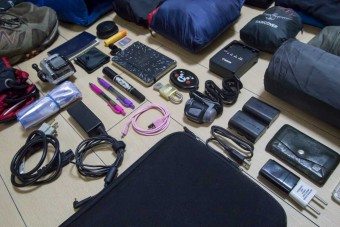
Since 73% of this class was on their first long-distance thru-hike, it’s safe to say that many had no idea what they were really getting into (because nothing, including this survey, can prepare you for the trail).
Because of this, many hikers end up dropping gear from their packs as the trail marches on, and they realize they don’t really need all the things they once thought were absolutely necessary to carry in their packs.
Here are the top things it took hikers the longest to eliminate (and things you may want to think twice about bringing along in your pack).
- Umbrella
- Solar charger
- Extra clothing (particularly long underwear and extra shirts)
- The Sawyer Mini (Review)
- Rope
- A book or journal of some sort
- An extra water filter
- Extra cooking supplies
When asked about what gear they would have liked to UPGRADE during the hike and what ADDITIONAL COMMENTS they had on gear, here is what this class had to say.
UPGRADE
- Sleeping Bag
- Tent
- Backpack
- Sleeping Pad
- Rainwear
- Tarp
COMMENTS
- Good gear is worth the investment.
- Lighter is better.
- Focus on warmth and waterproofing.
- Don’t stress about your gear.
- The Sawyer Mini is painfully slow – get the regular Sawyer
- Convenience can be worth it (especially later in the trail).
For more on gear, you can check out my Ultimate Pacific Crest Trail Packing List.
Health
The question of water treatment and hygiene is something that people worry a lot about before hitting the trail (and is typically something you find yourself worrying less about as the trail wears on).
Here’s some information on hiker HEALTH and WATER TREATMENT.
- DID YOU FILTER WATER? 48% Always, 47% Sometimes, 4% Never
- DID YOU GET SICK? (“sick” here means three or more consecutive days of digestive issues or a diagnosed case of giardia) | 10% Yes, 90% No
- DID YOU GET SICK? (in general) | 32% Yes, 68% No
Here’s a detailed breakdown of whether or not people filtered their water and got sick as a result (sick is defined as three or more consecutive days of digestive issues or a diagnosed case of giardia).
- 44% Always treated, never got sick
- 4% Always treated, got sick
- 41% Sometimes treated, never got sick
- 6% Sometimes treated, got sick
- 4% Never treated, never got sick
- 0% Never treated, got sick

In total, a reported 10% of hikers came down with something akin to giardia, and a mere 4% never filtered (those who don’t filter are typically quite staunch in their commitment to their strategy; read: I’m not sure they would admit to becoming sick as a result of their decision not to filter).
Likes and Dislikes
What was the FAVORITE section of the trail?
- The Sierra
- Goat Rocks (Washington)
- Washington
- Northern Cascades (Washington)
- Kings Canyon (Sierra)
What was the LEAST FAVORITE section of the trail?
- Northern California
- Southern Oregon
- Desert
- Mojave/Tehachapi (Desert)
- Oregon
I asked hikers what PCT RESOURCES they found the most and least valuable when planning their hike. If there was an overlap between resources (it was listed as both “most” and “least” valuable), I took the difference to see which side had the most support.
What resource did you find MOST VALUABLE when planning your hike?
- Blogs
- Craig’s PCT Planner
- Halfmile Maps/Halfmile App
- Halfway Anywhere* 🙂
- Planyourhike.com
- YouTube
What resource did you find LEAST VALUABLE when planning your hike?
- The PCT Facebook Page
- Other people’s opinions
- Yogi’s Guide
- Maps
- PCT Guidebooks
- Retail employees
*I want to thank everyone who supports the site and encourages me to keep doing what I do – so THANK YOU!
Regrets and Advice
Now for some real Class of 2016 wisdom: What would you have DONE DIFFERENTLY before starting your hike (or during your hike)?
- Trained more (more on PCT training here)
- Stressed/worried less before (and on) the trail
- Planned less (more on your useless PCT plans here)
- Researched gear more/gotten lighter gear (more on PCT gear here)
- Saved more money (more on PCT costs here)
I also asked this class what advice they had for future PCT hikers.
Since this information is diverse, thought-out, and useful for PCT hikers, ALL (the worthy) responses can be found here.
For now, here are a few of my favorites:
- Always be ready to break the monotony of your hike. Instead of always camping near water, switch things up and pack out water to a sweet, dry campsite overlooking an awesome view. Also, climb side peaks and side trails and bushwack to cool views. Be spontaneous and outgoing with the trail, new people, and experiences.
- Be flexible, within your time limits, to embrace experiences on and off the trail. Fully learn and practice LNT principles, and don’t be a dick.
- Don’t listen to anybody. Trust your gut. You’re a badass and can do anything.
- Don’t overplan! Don’t send resupply boxes ahead of time. It is not necessary to send food boxes in Southern California. You can send to Oregon from Ashland and to Washington from Cascade Locks. By then, you will know what you like and don’t like.
- Don’t take anyone’s advice too seriously. Other hikers are often too eager to impart their wisdom. In reality, the only way that you can figure out what is best for you is by trying things yourself.
- Just do it. Keep an open mind, don’t stick to a strict schedule and it will all work out.
- Never quit on a bad day.
- The internet will convince you that you’re underprepared and going to fail. Just relax and go. Don’t throw your money around, but make sure you’re warm at night and won’t starve and it will be fine.
- Try to avoid taking long trips in the back of U-Haul trucks – It’s very hot and painful and will get you in trouble with the cops.
Pacific Crest Trail Survey Collection
I spent a lot of hours putting this together and would appreciate any feedback, comments, questions, appraisals of my chances at turning statistician, or whatever else you can think of. Please leave a comment or get in touch to let me know what you think!
